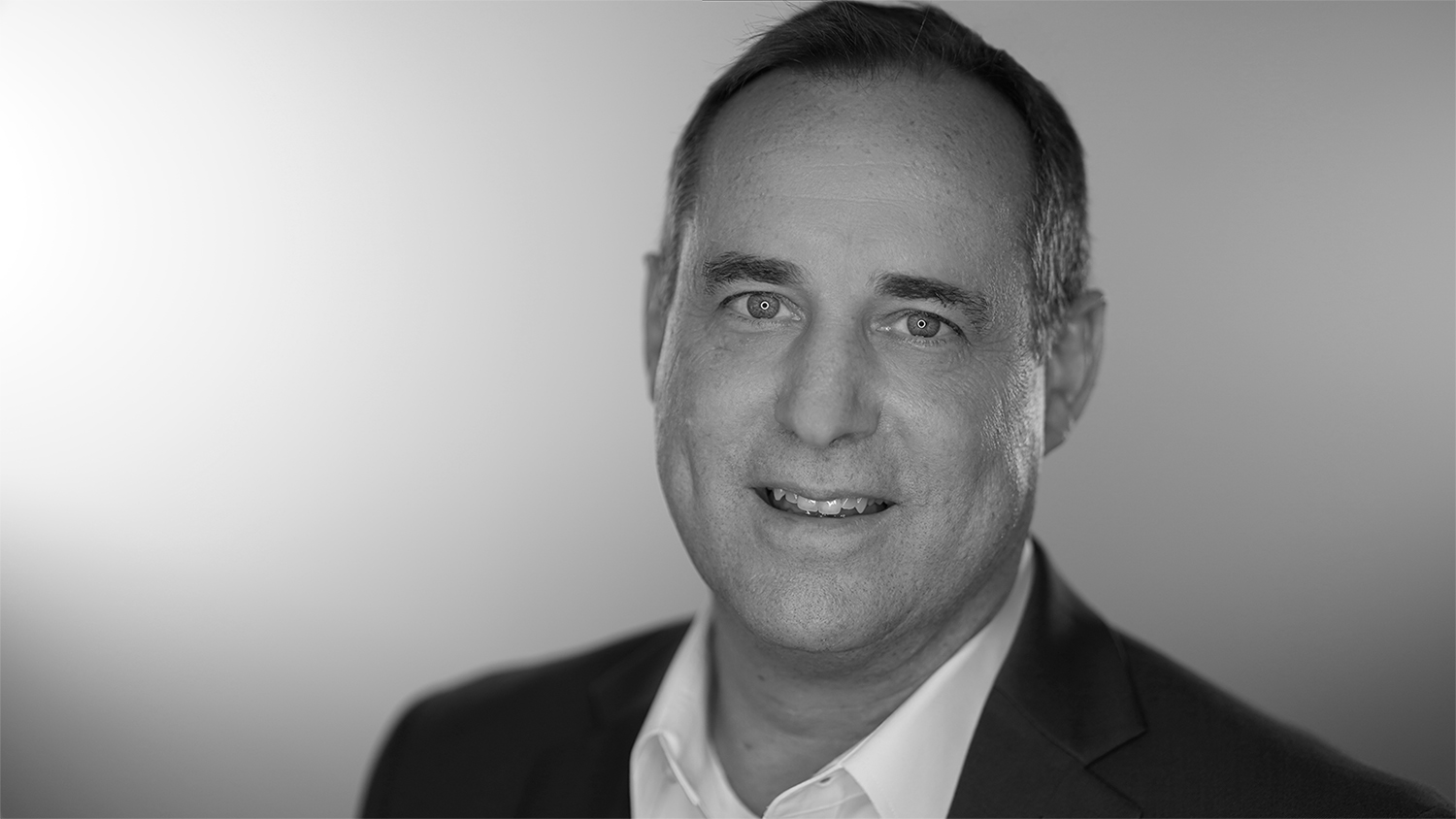Steve Altemus (’87) has a big event coming up this week. So does Embry-Riddle. And so does the rest of the world.
No earlier than 12:57 a.m. on Feb. 14, the launch window will open for the IM-1 mission to take flight aboard a SpaceX Falcon 9 from Cape Canaveral, Florida. Intuitive Machines’ first mission will launch the Nova-C lunar lander Odysseus and mark humanity’s return to the moon with all-new technologies from a 3D-printed cryogenic engine to the first communications network to be established on the moon.
Altemus — co-founder, president and CEO of Intuitive Machines — has been at the center of the commercial revolution that is returning humans to the moon and venturing to deep space. Intuitive Machines started in 2013 and now provides lunar access services, orbital services, lunar data services, and space products and infrastructure.
Altemus, who received his bachelor’s degree in Aeronautical Engineering from Embry-Riddle, has worked on NASA’s Space Shuttle program at Kennedy Space Center and led engineering at Johnson Space Center, before ultimately serving as deputy director of Johnson Space Center.
“We built a company that built a spacecraft that’s going to fly in space. And how many people can say they did that from a clean sheet of paper?”
— Steve Altemus (’87), Co-founder of Intuitive Machines
Onboard the Nova-C lunar lander, among other exciting scientific and technology payloads, will be a long-awaited achievement for dozens of past and current Embry-Riddle engineering students and their faculty advisors: EagleCam. The CubeSat camera system will launch with the lander, separate near the lunar surface and will take the first third-person view of a craft landing on the surface of the moon. And Altemus is the reason the students are getting this experience documenting a significant step forward in lunar and deep space exploration.
We spoke with Altemus in the days leading up to the launch about how he put his company and his university on this path to the moon. (The interview has been edited for clarity and length.)
Q: When you were founding Intuitive Machines, what was your hope?
A: When I was thinking about forming Intuitive Machines, it was a think tank that was going to serve the industries here in Houston, which is mainly oil and gas, healthcare and aerospace. And it came from being at NASA and being somewhat frustrated about the pace at which NASA was headed. I was 50 years old at the time and decided that there was more good in the world that I could do with my background in engineering and human spaceflight engineering to solve intractable problems around the world in those three major industries. I had no idea that the United States would be returning to the moon. It just wasn’t in conversation during this time. And it wasn’t until 2018 when the moon became of strategic interest to the National Security Council that we threw our hat in the ring to compete for flying to the moon commercially on behalf of NASA. And we were very successful after that point as we turned our focus towards the moon, winning multiple missions to the moon, building the business out around creating a new emerging economy farther than anything we’ve done before as a human race.
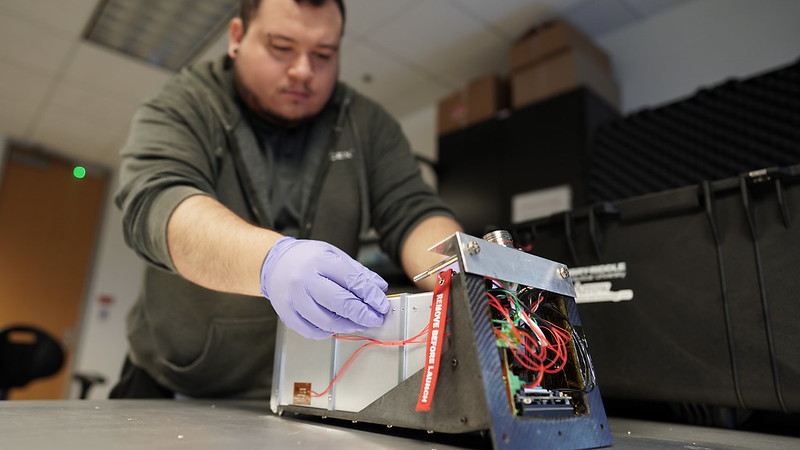
What is the main goal of the IM-1 mission?
I think there are several goals. The primary goal is a geopolitical goal. The United States is demonstrating that its economic base — commercial companies — can strive for and achieve something like landing softly on the moon and landing in the South Pole region of the moon, which has never been done before by anyone. As a commercial company, you produce at a price point that is on the order of $100 million or so. You’ve disrupted traditional aerospace in terms of what it should cost to go to the moon. You’ve seen SpaceX lower the cost of launch to orbit just out of the atmosphere.
And then finally, there’s very interesting science and commercial payloads that we’re flying like Embry-Riddle’s EagleCam, which will take the first selfie of a spacecraft landing on a celestial body. We have a number of scientific payloads to study the dust environment, to assist with navigation, and payloads to measure the radio frequency background on the moon as a precursor to humans being there in a more sustainable way.
Can you talk about how you got the students of Embry-Riddle involved and opened the opportunity for EagleCam?
I sat on the Industry Advisory Board for the College of Engineering and had an opportunity to interact with the faculty and students in the college. I’ve always been impressed by Embry-Riddle’s focus on hands-on development work for engineers that keeps them interested in the program and keeps them hungry for knowledge. After graduating from Embry-Riddle and having a very distinguished career in NASA, to have my own company and to be able to fly to the moon, I just felt like there had to be a way for my alma mater to participate. So I talked to the dean of Engineering and said, “Hey, look, I want to do this project, and I’ll donate mass on the vehicle to fly a student and faculty experiment. And here’s an idea for the experiment.” And it was the EagleCam. And boy, they latched on to it, did a fantastic job and brought the students along and the faculty stayed with it and built something and tested something that is going to be historic in terms of the images it provides the world after we land.
I love the educational aspect of this. If you can show someone what the future looks like in a very tangible way, it’ll change their life in positive aspects. I really think that is important, and that’s what I see in their eyes and hear from their voices about the future of space. And I love to see that spark just appear, and now suddenly they’re awakened to all the possibilities of what a career in space exploration can be.
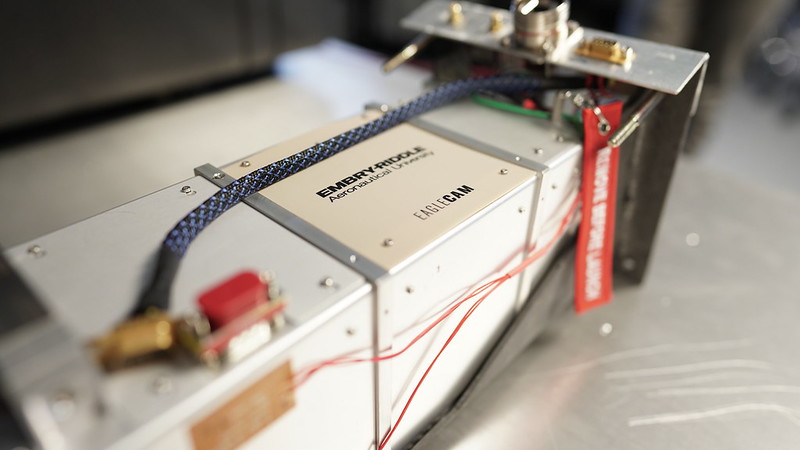
What are your hopes for the mission?
I hope everything goes well. We’ve done all the engineering we can to make sure that we’ve done all the testing that we should have done and more to make sure that this is going to be a success. I’m appreciative of the opportunity to carry this responsibility for the United States. And I would like, whether we succeed or fail in the actual touchdown on the moon, for the public and for the government and for companies to maintain resiliency in terms of you’ve got to keep trying. We’re trying to do something that’s never been done before. We’re trying to land on the moon fixed-price in about a four-year timeframe. I think the only thing that would be a failure is if we gave up or if we were not allowed to continue as a result of a failure in a space system. I tell the team and the EagleCam team, we’re already successful. We built a company that built a spacecraft that’s going to fly in space. And how many people can say they did that from a clean sheet of paper?
Can you talk about the most significant innovations that are helping get this mission off the ground?
There’s so many firsts that come with this mission. Separating from the launch vehicle. Acquiring the signal and capturing the communications for the first-ever lunar data network that’s commercially built by Intuitive Machines. There are business innovations, there are engineering innovations and there are technology innovations.
The business innovation is a partnership with the City of Houston, which actually financed our Lunar Production and Operations Center at Spaceport Houston. This is our new facility where we can produce four landers simultaneously and do all the machining and production work to build those vehicles. Having them finance this $40-million expansion for the company meant that we could pour our scarce capital into building the technologies right.
The second one was process. We took what we knew best about how to engineer complex systems by putting the hardware and the software together and testing it very quickly. We were testing our engine with our flight software and our electronics before we even submitted a proposal to go to the moon for NASA rapid integration.
And then finally the technology. The 3D-printed cryogenic space propulsion engine — that’s the first of its kind. The tanks that hold our propellants, our linerless composite tanks — those have never shown the ability to be leak proof — and we’ve proven that. We now have the lightest-weight tanks in production.
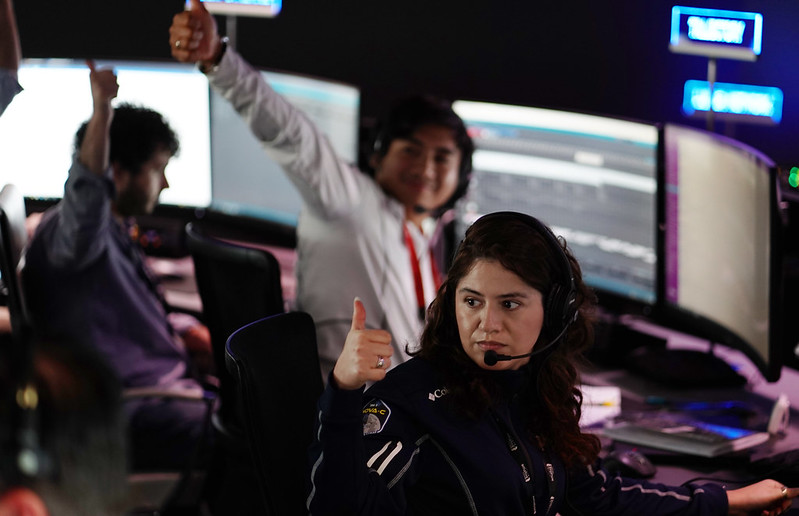
Can you talk about how the commercial ecosystem is shaping future space exploration?
Everybody growing up until this point as an aerospace engineer thought that the Apollo program was the time to live as an aerospace engineer and be able to work on taking humans to the moon. Instead, now is probably the most exciting time to be an aerospace engineer because even a small commercial company like Intuitive Machines can lead a path towards returning the U.S. to the moon. That’s incredibly exciting.
Will your company live in that lunar lander space or space exploration as a whole?
We’re more than lunar access. To be able to land on the moon, we had to build an entire lunar program like a mini-Apollo program. So as a result, we not only can land on the moon, we can communicate to and from the moon. That lunar distance communications network is very important, and that’s part of the business going forward where we can provide communications to the Artemis program. We take and deploy satellites on our way to the moon to orbits that might go deeper into space, or that might go into cislunar space. And then finally, the infrastructure that’s needed on the moon to sustain human presence, whether that’s a nuclear reactor or a fission reactor, whether that’s a moon buggy of the future for the astronauts, or that’s just heavy cargo or habitats for astronauts. That’s where we are playing, and you’ll see more of Intuitive Machines in that area going forward.
Is there anything that you would like alumni to know about this mission?
Tune in. It’s on Valentine’s Day, that morning, very, very early.
I have a big mural on the wall outside my office of the moon, and across the mural the saying is “Defy Impossible.” And I think what’s important for alumni and students to understand is that if you dream of it and imagine it, you can bring it into existence, through just the power of your vision and your thoughts. Unleashing that in others is a very powerful thing. And we’ve been able to do that at Intuitive Machines. We have a lot of bright young technicians and engineers that now are inspired to have glorious careers in aerospace and space exploration.
I’m just proud to be at this point in history, and I look forward to the mission. And I’m going to enjoy the journey along the way.
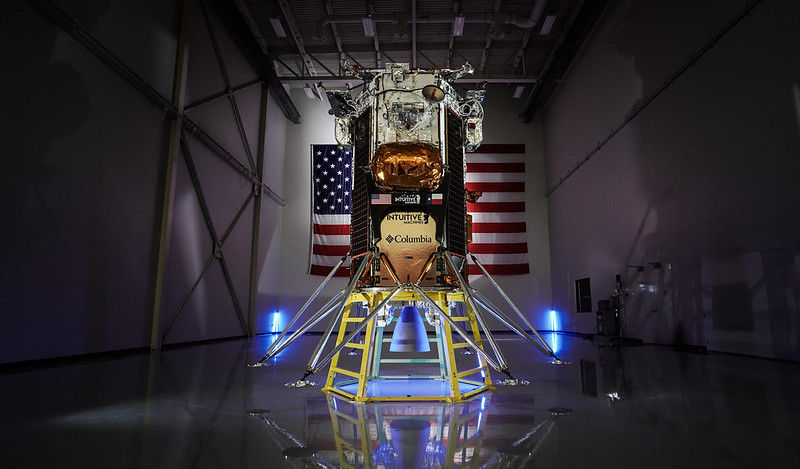
IM-1 and EagleCam Timeline
![]() 2018: Intuitive Machines is one of nine companies chosen by NASA to build lunar landers as part of its Commercial Lunar Payload Services initiative.
2018: Intuitive Machines is one of nine companies chosen by NASA to build lunar landers as part of its Commercial Lunar Payload Services initiative.
![]() 2019: SpaceX is selected to launch IM-1.
2019: SpaceX is selected to launch IM-1.
![]() 2019: Altemus proposes EagleCam to the Embry-Riddle College of Engineering in Daytona Beach.
2019: Altemus proposes EagleCam to the Embry-Riddle College of Engineering in Daytona Beach.
![]() 2020: The EagleCam team continues on the project through videoconferencing during the Covid-19 pandemic.
2020: The EagleCam team continues on the project through videoconferencing during the Covid-19 pandemic.
![]() 2021: The EagleCam team partners with NASA’s Kennedy Space Center to demonstrate electrodynamic dust shield technology on camera during deployment.
2021: The EagleCam team partners with NASA’s Kennedy Space Center to demonstrate electrodynamic dust shield technology on camera during deployment.
![]() 2021: Nova Control, Intuitive Machines’ command center, is completed in Houston, Texas.
2021: Nova Control, Intuitive Machines’ command center, is completed in Houston, Texas.
![]() 2021:Announcement made that Nova-C will deliver Nokia equipment to establish the first wireless broadband communications system on the moon.
2021:Announcement made that Nova-C will deliver Nokia equipment to establish the first wireless broadband communications system on the moon.
![]() 2021: Houston Spaceport opens. Intuitive Machines becomes its first tenant.
2021: Houston Spaceport opens. Intuitive Machines becomes its first tenant.
![]() 2021: Construction is completed on EagleCam.
2021: Construction is completed on EagleCam.
![]() 2022: Intuitive Machines validates the complete lunar communications solution ahead of IM-1 mission.
2022: Intuitive Machines validates the complete lunar communications solution ahead of IM-1 mission.
![]() 2023: Intuitive Machines and Columbia Sportswear launch new scholarship program at Embry-Riddle.
2023: Intuitive Machines and Columbia Sportswear launch new scholarship program at Embry-Riddle.
![]() 2023: EagleCam team brings mission payload to Houston, Texas.
2023: EagleCam team brings mission payload to Houston, Texas.
![]() 2023: Intuitive Machines successfully concludes a complete spacecraft test run of Nova-C.
2023: Intuitive Machines successfully concludes a complete spacecraft test run of Nova-C.
![]() Dec. 4, 2023: Nova-C arrives in Cape Canaveral, Florida.
Dec. 4, 2023: Nova-C arrives in Cape Canaveral, Florida.
![]() Feb. 14, 2024, 12:57 a.m.: IM-1 launch window to open at Cape Canaveral.
Feb. 14, 2024, 12:57 a.m.: IM-1 launch window to open at Cape Canaveral.
![]() Feb. 22, 2024: IM-1 to land on the moon and deploy EagleCam.
Feb. 22, 2024: IM-1 to land on the moon and deploy EagleCam.
